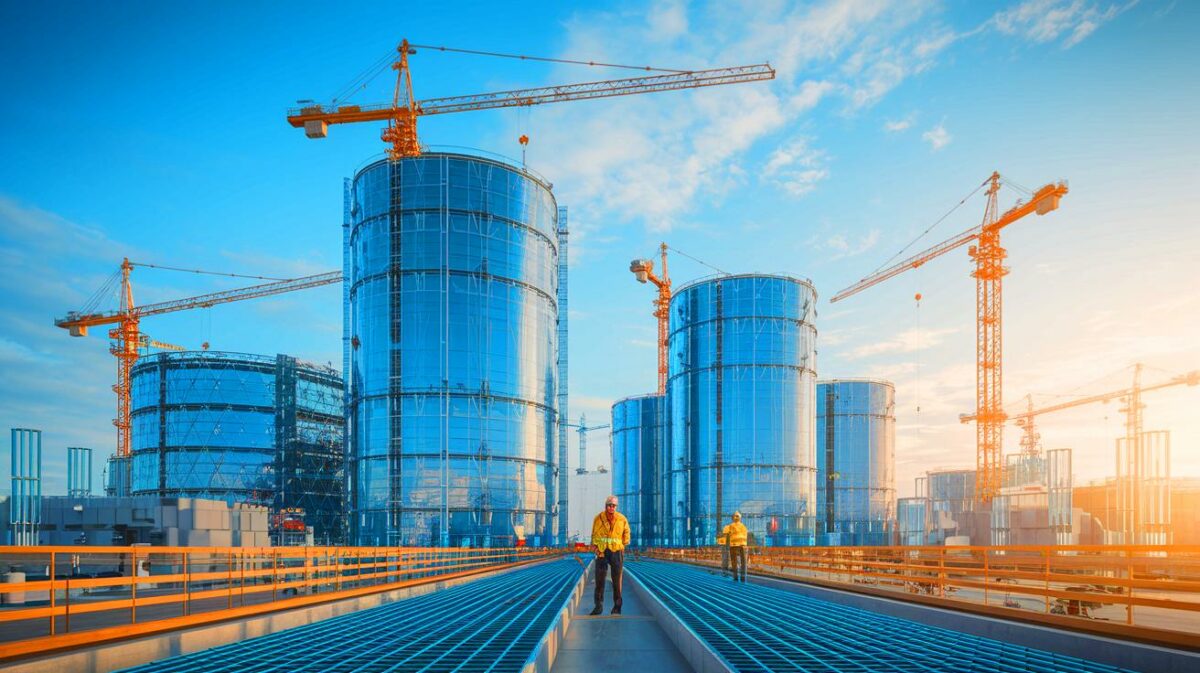| IN A NUTSHELL |
|
The construction industry, long known for its environmental impact, is on the cusp of a transformative shift. As the world pushes for sustainability, hydrogen fuel cell generators are emerging as a promising alternative to traditional diesel generators. In particular, the ambitious HS2 project in the United Kingdom exemplifies this shift towards greener construction practices. This article delves into the potential of hydrogen as a clean energy source and highlights the challenges and innovations shaping its adoption in the construction sector.
The Rise of Hydrogen Fuel Cells in Construction
The adoption of hydrogen fuel cells in the construction sector marks a significant departure from conventional energy sources. Hydrogen generators, pioneered by companies such as GeoPura, are poised to replace diesel generators, which are notorious for their carbon emissions. These fuel cells aim to decarbonize one of the most polluting industries by providing a clean and efficient energy source. However, the journey hasn’t been without setbacks. The year 2024 saw several hydrogen-focused companies struggling, raising concerns about the scalability of this technology.
Despite these challenges, the HS2 project in the UK offers a glimmer of hope. This massive infrastructure endeavor utilizes hydrogen fuel cells to power construction sites, showcasing how these technologies can be integrated into large-scale projects. The potential for hydrogen in construction is vast, but its widespread adoption hinges on overcoming economic and logistical hurdles.
Innovative Energy Solutions at the HS2 Site
The HS2 Victoria Road construction site in London is a testament to the potential of hydrogen fuel cells. Underneath a network of conveyor systems, two unassuming white containers hum quietly, providing all the energy needed for the site. These containers house hydrogen fuel cells, a revolutionary energy solution that could pave the way for emission-free construction.
Hydrogen is often touted as the fuel of the future, and for good reason. It is the most abundant element in the universe and contains three times more energy than gasoline. The combustion of hydrogen releases only water, eliminating carbon emissions entirely. This makes it an ideal candidate for powering heavy industries, including construction. The HS2 project demonstrates the viability of hydrogen fuel cells in real-world applications, offering a glimpse into a sustainable future for construction.
GeoPura’s Vision and Business Model
GeoPura, in partnership with Siemens Energy Ventures, is at the forefront of hydrogen innovation. Founded in 2019, the company produces renewable hydrogen in the UK and supplies it to hydrogen power units (HPUs) leased to construction sites and events. By 2025, GeoPura aims to expand its fleet to 3,600 HPUs by 2033 and invest in green hydrogen production facilities.
This ambitious plan highlights GeoPura’s commitment to fostering a zero-emission construction industry. The company’s business model revolves around producing and distributing hydrogen efficiently, making it accessible for various applications. As the cost of hydrogen production continues to decline, the economic viability of these solutions is becoming increasingly apparent, bringing us closer to a cleaner construction landscape.
Economic Challenges and Future Prospects
While hydrogen holds great promise, its deployment in the construction sector faces significant economic challenges. One of the primary barriers is the high cost of hydrogen compared to diesel generators. Additionally, the logistics of hydrogen production and distribution add complexity to its adoption. However, these challenges are not insurmountable.
Initiatives like those spearheaded by GeoPura are driving down production costs, and ongoing innovations in the field are paving the way for a less polluting construction industry. As more companies invest in hydrogen technologies, the construction sector may soon undergo a green revolution. The question remains: how quickly can these changes be implemented, and what impact will they have on the industry’s carbon footprint?
The potential of hydrogen as a clean energy source for construction is undeniable. With projects like HS2 leading the way, the industry is gradually shifting towards more sustainable practices. However, the road to widespread hydrogen adoption is fraught with challenges, particularly economic ones. As we look to the future, the question remains: will hydrogen fuel cells transform the construction industry, and what new innovations will emerge along the way?
Did you like it? 4.7/5 (20)









Wow, $134 billion is a lot of money! How long will it take for the project to pay off? 💰